Sugar gliders and flying squirrels are two small, nocturnal animals that are often confused for one another. Although they share some similarities, such as their size and their ability to glide through the air, there are also some key differences between these two animals. For example, sugar gliders are native to Australia and Indonesia, while flying squirrels are found in North America. Here, we will take a closer look at the similarities and differences between these two animals.
Sugar Gliders vs. Flying Squirrels: The Main Differences
Although they are both able to glide through the air, there are several key differences between these two species. Sugar gliders and flying squirrels are two small, nocturnal animals that are often mistaken for one another.
For one, sugar gliders are native to Australia and Indonesia, while flying squirrels are found in North America and parts of Eurasia. Sugar gliders are also much smaller than flying squirrels, with a body length of only about 6-8 inches.
This flap allows flying squirrels to glide, but also gives them greater control and maneuverability in the air. Another key difference is that sugar gliders have a membrane between their front and back legs that allows them to glide, while flying squirrels have a flap of skin that extends from their wrists to their ankles.
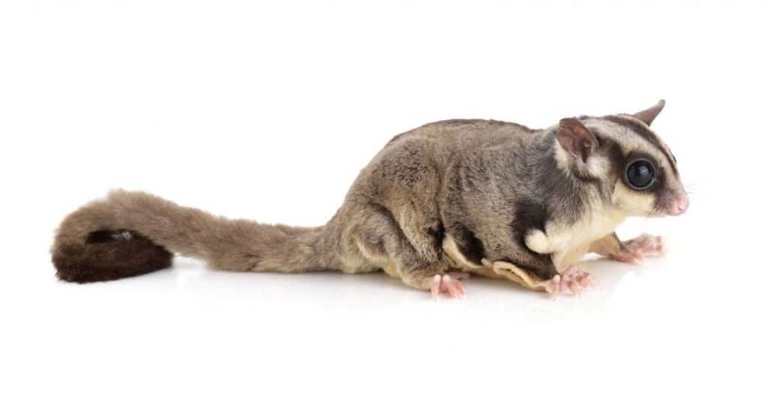
This means that sugar gliders are more likely to be seen in the wild, while flying squirrels are more likely to be found alone in the trees. Finally, sugar gliders are social animals that live in groups, while flying squirrels are typically solitary.
Geographic Origin
Sugar gliders and flying squirrels are both small, nocturnal, and arboreal animals. Both sugar gliders and flying squirrels have furry bodies and long tails. They are found in different parts of the world, with sugar gliders being native to Australia and flying squirrels being native to North America.
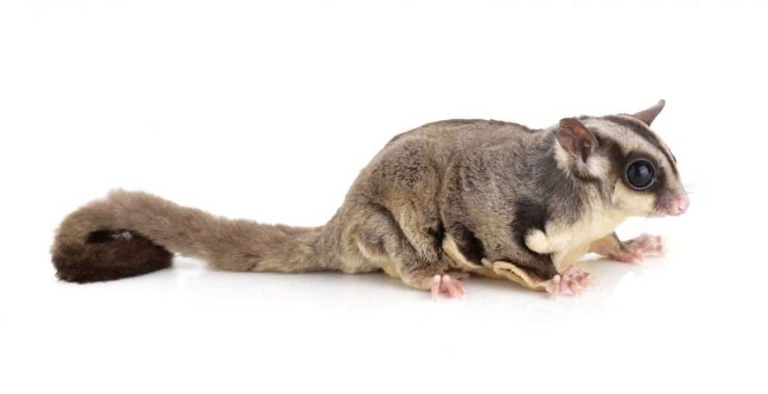
Sugar gliders are omnivores, while flying squirrels are mostly herbivores. Sugar gliders eat insects, small vertebrates, and nectar, while flying squirrels eat mainly nuts, seeds, and fruits. The main difference between sugar gliders and flying squirrels is their diet.
Flying squirrels are more low-maintenance than sugar gliders and can be content in a smaller enclosure. They are both intelligent and social animals that can bond with their human owners. Sugar gliders are more active than flying squirrels and require more space to exercise. Both sugar gliders and flying squirrels are popular pets.
Classification
Although they share some similarities, there are also key differences between the two. There are two main types of gliding animals- sugar gliders and flying squirrels.
Sugar gliders are small marsupials that are native to Australia, Indonesia, and New Guinea. Sugar gliders have a furry membrane that extends from their wrists to their ankles, which they use to glide from tree to tree. They get their name from their love of eating sweet fruits and nectar.

Flying squirrels are rodents that are found in North America, Europe, and Asia. However, flying squirrels are much larger than sugar gliders and can glide for much longer distances. Like sugar gliders, they have a furry membrane that helps them glide.
So, what are the key similarities and differences between these two types of gliding animals? Finally, flying squirrels are found in a wider range of locations than sugar gliders. Additionally, sugar gliders are much smaller than flying squirrels and can only glide for short distances. For one, sugar gliders are marsupials while flying squirrels are rodents.
Appearance
Sugar gliders and flying squirrels are both small, nocturnal, and arboreal animals. They are often confused for one another, but there are some key differences between the two.
Sugar gliders are native to Australia, Indonesia, and New Guinea. This membrane allows them to glide up to 50 meters. Sugar gliders are also equipped with a tail that acts as a rudder when they are gliding. They have a gliding membrane that extends from their wrists to their ankles.
Flying squirrels are native to North America and Eurasia. Flying squirrels also have a furry tail that they use for balance while gliding. This membrane allows them to glide up to 90 meters. They have a gliding membrane that extends from their wrists to their ankles.
Sugar gliders are about the size of a squirrel, while flying squirrels are about half the size of a squirrel. One of the most noticeable differences between sugar gliders and flying squirrels is their size.

Sugar gliders are omnivores and eat a variety of foods, including insects, fruits, and nectar. Another difference between the two is their diet. Flying squirrels are mostly herbivores and eat a diet of nuts, seeds, and fruits.
So, while sugar gliders and flying squirrels may look similar, there are some key differences between the two.
Diversity and Species
Among these are two popular pets, sugar gliders and flying squirrels. Though they may seem similar at first glance, there are actually several key differences between these two species. There are many different types of animals in the world, each with their own unique abilities and features.
For one, sugar gliders are much smaller than flying squirrels. Sugar gliders also have a membrane between their front and back legs that allows them to glide, while flying squirrels have a flap of skin that helps them glide. They also have different coloring, with sugar gliders typically being gray or brown, and flying squirrels being more reddish in color.
This diet difference is likely due to the different habitats these two animals live in. Another key difference is in their diet. Sugar gliders are native to Australia and Indonesia, while flying squirrels are found in North America and parts of Europe. Sugar gliders are omnivorous, meaning they eat both plants and animals. Flying squirrels, on the other hand, are mostly herbivorous, only eating plants.

Both are nocturnal, meaning they are active at night. Despite these differences, there are also some similarities between sugar gliders and flying squirrels. They are also both able to glide, though sugar gliders can glide for longer distances than flying squirrels.
Overall, sugar gliders and flying squirrels are two very different animals. Though they may look similar, their size, diet, and habitat all set them apart.
Life Span
They are often confused with each other because they look so similar, but there are some key differences between these two species. Sugar gliders (Petaurus breviceps) and flying squirrels (Glaucomys volans) are two small, nocturnal, arboreal (tree-dwelling) marsupials.
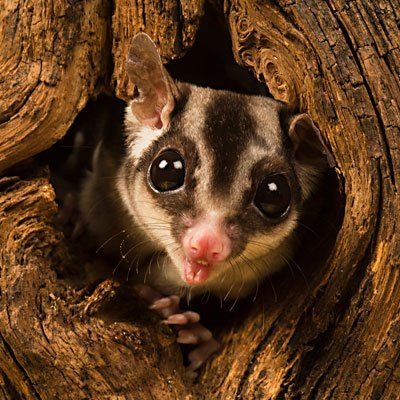
For one, sugar gliders are native to Australia and Indonesia, while flying squirrels are found in North America. And while both species have furry, gliding membranes that allow them to glide from tree to tree, sugar gliders can glide up to 150 feet, while flying squirrels can only glide for about 30 feet. Sugar gliders are also much smaller than flying squirrels, with a body length of only about 6-8 inches.
So, if you’re looking for a long-lived, tree-dwelling pet marsupial, a sugar glider might be the right choice for you. Finally, sugar gliders live much longer than flying squirrels in captivity. Sugar gliders have a life span of about 12 years, while flying squirrels typically only live for 5-8 years.
Diet
However, there are also some key differences between the two animals. They are both small, nocturnal, and have the ability to glide through the air. There are many similarities between sugar gliders and flying squirrels.
For one, sugar gliders are native to Australia and New Guinea, while flying squirrels are found in North America and parts of Eurasia. Sugar gliders are also much more social animals, living in colonies of up to 20 individuals, while flying squirrels are typically solitary creatures.
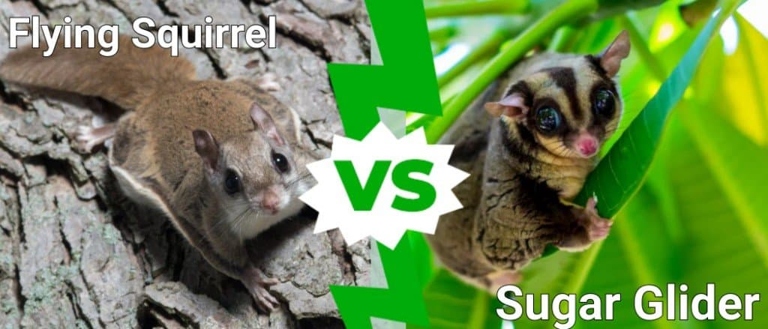
Sugar gliders are omnivores, meaning they eat both plants and animals. Flying squirrels, on the other hand, are strictly herbivores and only eat plants. Another key difference is in their diet.
So, while there are some similarities between sugar gliders and flying squirrels, there are also some important differences.
Social Behavior
They are also both very vocal, communicating with a variety of sounds and body language. Both animals are highly social, living in groups of up to 20 individuals. The social behavior of sugar gliders and flying squirrels is one of the key similarities between the two species.
However, there are some key differences in the social behavior of these two animals. Flying squirrels, on the other hand, are much more likely to form alliances with other flying squirrels, even if they are not from the same group. Sugar gliders are much more territorial, and will often fight with other sugar gliders from outside their group.
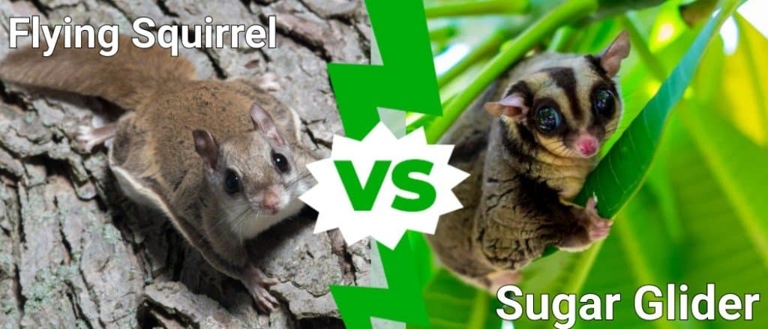
Overall, the social behavior of sugar gliders and flying squirrels is very similar. Both animals are highly social, living in groups and communicating with a variety of sounds and body language. However, there are some key differences, such as the level of territoriality and the formation of alliances.
Gliding
But what are the key similarities and differences between these two animals? They are both small, cute, and have the ability to glide through the air. Sugar gliders and flying squirrels are two very popular pets.
For starters, sugar gliders are native to Australia, while flying squirrels are native to North America. Flying squirrels, on the other hand, can grow to be up to 12 inches long. Sugar gliders are also much smaller than flying squirrels, with a body length of only about 6-8 inches.
Another key difference between these two animals is their diet. Flying squirrels, on the other hand, are strictly herbivores and only eat plants. Sugar gliders are omnivores, meaning they eat both plants and animals.
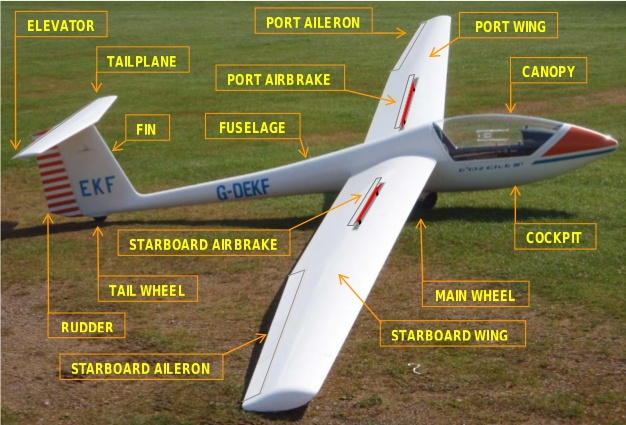
Finally, sugar gliders are social animals that live in groups, while flying squirrels are solitary animals that live alone. This means that if you’re looking for a pet that you can cuddle and play with, a sugar glider would be a better choice than a flying squirrel.
What are the Main Similarities Between Sugar Gliders and Flying Squirrels?
Sugar gliders (Petaurus breviceps) and flying squirrels (Glaucomys volans) are two small, nocturnal, arboreal animals. And they are both able to glide through the air, using the skin between their front and back legs as a parachute. Both sugar gliders and flying squirrels are about the same size, with sugar gliders being slightly larger. They both have large eyes, long tails, and furry bodies. They are often confused with each other because they look so similar and have many of the same habits.
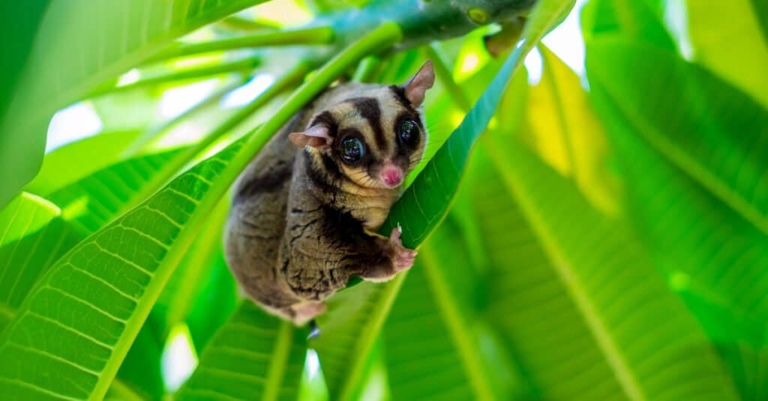
Sugar gliders are native to Australia, Indonesia, and Papua New Guinea, while flying squirrels are found in North America. Finally, sugar gliders are omnivorous, eating both insects and plants, while flying squirrels are mostly herbivorous. Sugar gliders are also more social animals, living in groups of up to 20 individuals, while flying squirrels are typically solitary. However, there are some key differences between sugar gliders and flying squirrels.
Sugar Bears vs. Sugar Gliders: Are they the Same?
Sugar gliders are marsupials, meaning they have a pouch in which they carry their young. Sugar bears, on the other hand, are rodents. They are much larger than sugar gliders, weighing up to 2 pounds. They are not able to glide, but they are good climbers. They are also very good at gliding, which is how they got their name. Sugar gliders are nocturnal, meaning they are active at night. They are also much smaller than sugar bears, weighing in at only about 4 ounces. Sugar gliders and sugar bears are two very different animals. Sugar bears are also diurnal, meaning they are active during the day.
How to Care for a Flying Squirrel
They are closely related to the more common tree squirrels, but have a number of unique adaptations that allow them to live in the trees. Flying squirrels are small, nocturnal rodents that are found in North America, Europe, and Asia.
They are very active and need a large cage with plenty of toys and climbing space. They also need a diet high in protein and fat, which can be found in special flying squirrel food mixes or in insects and other small animals. Flying squirrels are relatively easy to care for, but there are a few things to keep in mind.

They are generally gentle and can be handled, but may bite if frightened. With proper care, flying squirrels can make great pets. Flying squirrels are social animals and do best when kept in pairs or small groups.
Bonding
Flying squirrels are also more independent and can be content living alone. Bonding is an important aspect to consider when choosing a pet. However, sugar gliders are more prone to bonding with their human companions than flying squirrels. Sugar gliders and flying squirrels are both social creatures that enjoy being around others of their kind.
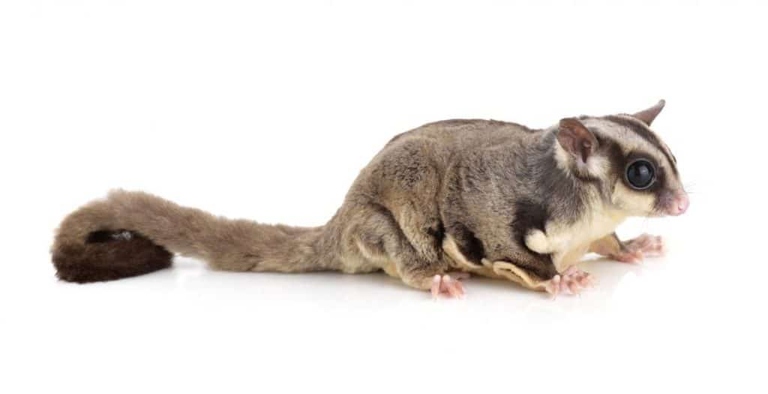
They are not as social as sugar gliders and do not form the same strong bonds with their owners. When it comes to bonding, sugar gliders are more like dogs or cats, while flying squirrels are more like rabbits. Sugar gliders form strong bonds with their owners and enjoy spending time with them. Flying squirrels, on the other hand, are more independent and can be content living alone. They are very social creatures and do not do well if left alone for long periods of time.
If you are looking for a pet that will bond closely with you, a sugar glider is a better choice than a flying squirrel. However, if you are looking for a pet that is more independent, a flying squirrel may be a better choice.
Habitat
Sugar gliders are found in the forests of Australia, Indonesia, and Papua New Guinea, while flying squirrels are found in the forests of North America, Europe, and Asia. Both sugar gliders and flying squirrels are arboreal, meaning they live in trees, but sugar gliders are more likely to be found in the canopy, while flying squirrels are more likely to be found in the lower levels of the forest. Habitat is one of the key similarities and differences between sugar gliders and flying squirrels.
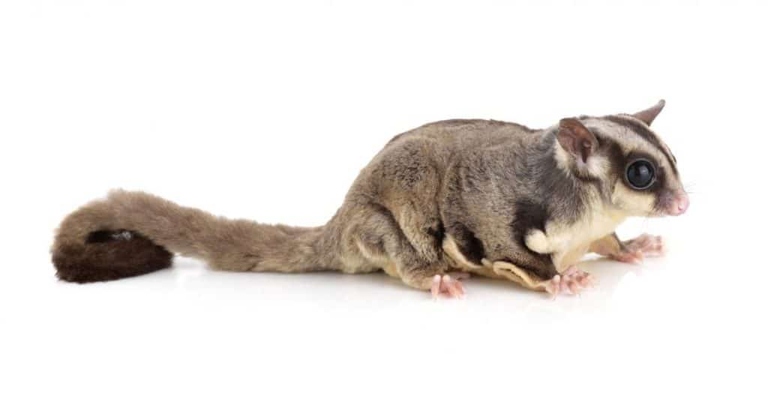
Another key difference between sugar gliders and flying squirrels is their diet. Sugar gliders are omnivores, meaning they eat both plants and animals, while flying squirrels are mostly herbivores, meaning they eat mostly plants. Sugar gliders eat insects, spiders, small mammals, and nectar, while flying squirrels eat acorns, nuts, berries, and seeds.
Sugar gliders can glide up to 150 feet (46 meters), while flying squirrels can glide up to 300 feet (91 meters). Sugar gliders glide through the air using their skin flaps, while flying squirrels use their furry tails to glide. Finally, sugar gliders and flying squirrels have different methods of locomotion.
Diet
Diet is one of the key similarities and differences between sugar gliders and flying squirrels. Flying squirrels, on the other hand, are mostly herbivores. Their diet consists of insects, fruits, and nectar. They eat mostly nuts, seeds, and fruits. Sugar gliders are omnivores, meaning they eat both plants and animals.
Sugar gliders have a simple stomach and intestines that are efficient in digesting both plant and animal matter. Flying squirrels have a more complex stomach and intestines that are better suited for digesting plant matter. One of the main reasons why diet is a key similarity and difference between these two animals is because of their different digestive systems.

Sugar gliders are active during the day and night, while flying squirrels are mostly active at night. Another reason why diet is a key similarity and difference between these two animals is because of their different lifestyles. This means that sugar gliders need more energy and nutrients than flying squirrels.
Health Care
However, there are a few key differences between the two animals. Sugar gliders also have a membrane between their front and back legs that helps them glide, whereas flying squirrels have a membrane between their front and hind legs. Sugar gliders are native to Australia, whereas flying squirrels are native to North America. There are a few key similarities and differences between sugar gliders and flying squirrels. Finally, sugar gliders are omnivores and eat both insects and plants, while flying squirrels are mostly herbivores and eat mostly nuts, seeds, and fruits. For one, both sugar gliders and flying squirrels are nocturnal, meaning they are most active at night. They are also both small animals that are able to glide through the air.
What are the Pros and Cons of Having a Flying Squirrel as a Pet?
First, let’s look at the pros: There are a few key things to consider if you’re thinking about getting a flying squirrel as a pet.
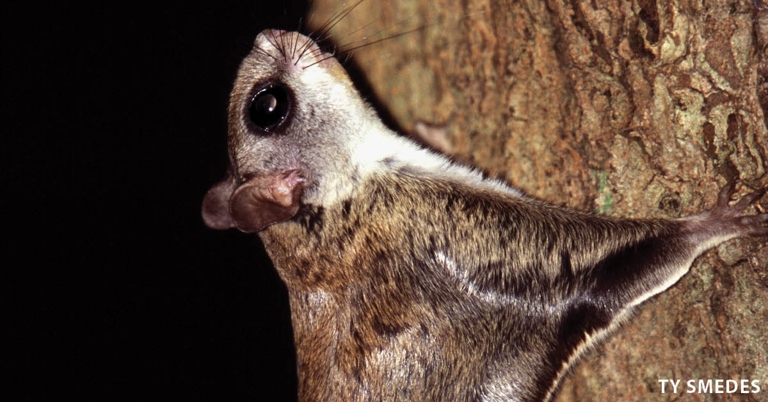
Flying squirrels are incredibly cute, and their small size means they can be easily cared for. They’re also very social creatures, so if you’re looking for a pet that will bond with you, a flying squirrel could be a good choice.
Now, let’s look at the cons:
They also require a lot of space to exercise, so if you live in a small apartment, a flying squirrel might not be the best pet for you. Flying squirrels are nocturnal, so if you’re looking for a pet that will be active during the day, this isn’t the right choice.
Weigh the pros and cons carefully to see if a flying squirrel is the right fit for you and your lifestyle. Ultimately, the decision of whether or not to get a flying squirrel as a pet is up to you.
Pros
They are often confused with each other because they look so similar, but there are some key differences between these two species. Sugar gliders (Petaurus breviceps) and flying squirrels (Glaucomys volans) are two small, nocturnal, arboreal marsupials.
And while both species have furry, gliding membranes that allow them to glide from tree to tree, sugar gliders can glide up to 150 feet, while flying squirrels can only glide for about 30 feet. For one, sugar gliders are native to Australia, Indonesia, and Papua New Guinea, while flying squirrels are found in North America. Sugar gliders are also much smaller than flying squirrels, with a body length of only about 6-7 inches.

Sugar gliders are also known for their loud, high-pitched calls, while flying squirrels are relatively silent. Another key difference is that sugar gliders are social animals that live in groups, while flying squirrels are mostly solitary.
So, if you’re ever trying to spot a sugar glider or a flying squirrel in the wild, remember to look for these key differences. And if you’re ever in doubt, just remember that sugar gliders are much sweeter than flying squirrels!
Cons
For one, sugar gliders are native to Australia, while flying squirrels are found in North America. Sugar gliders are also much smaller than flying squirrels, weighing in at around 4 ounces compared to the average flying squirrel’s 1.5 pounds. Sugar gliders and flying squirrels might look similar, but there are some key differences between the two animals.
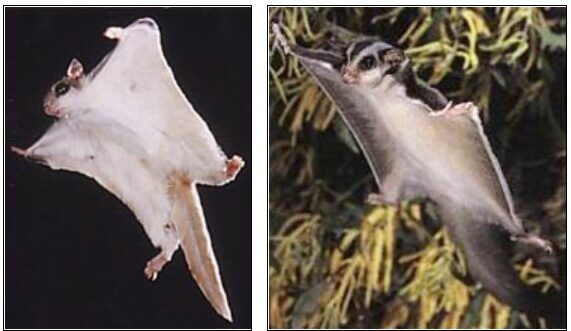
And while both animals are capable of gliding through the air, sugar gliders can glide for up to 150 feet, while flying squirrels can only glide for about 30 feet. Another difference is that sugar gliders are nocturnal, meaning they’re active at night, while flying squirrels are diurnal, or active during the day.
But if you’re looking for a larger, diurnal, gliding pet, a flying squirrel might be a better option. So, if you’re looking for a small, nocturnal, gliding pet, a sugar glider might be the right choice for you.
Frequently Asked Questions
1. What are the key similarities between sugar gliders and flying squirrels?
Both sugar gliders and flying squirrels are small, nocturnal, and arboreal animals. They are both able to glide through the air using the skin between their front and back legs. And they are both native to Australia and Indonesia.
2. What are the key differences between sugar gliders and flying squirrels?
The main difference between sugar gliders and flying squirrels is that sugar gliders are marsupials, while flying squirrels are rodents. This means that sugar gliders have a pouch in which they carry their young, while flying squirrels do not. Additionally, sugar gliders are much smaller than flying squirrels, with an average body length of around 6 inches, while flying squirrels can grow up to 18 inches long.
3. How do sugar gliders glide?
Sugar gliders glide through the air using the skin between their front and back legs, which is called the patagium. This skin stretches from their wrists to their ankles, and acts like a parachute, allowing them to glide up to 50 feet at a time.
4. How do flying squirrels glide?
Flying squirrels glide in a similar way to sugar gliders, using the skin between their front and back legs, which is called the patagium. This skin stretches from their wrists to their ankles, and allows them to glide up to 150 feet at a time.
5. What do sugar gliders eat?
Sugar gliders are omnivorous, which means they eat both plants and animals. In the wild, their diet consists of insects, small vertebrates, nectar, and fruit. In captivity, they can be fed a diet of commercially-prepared sugar glider food, fruits, vegetables, and live insects.
6. What do flying squirrels eat?
Flying squirrels are also omnivorous, and their diet in the wild consists of insects, nuts, and berries. In captivity, they can be fed a diet of commercially-prepared flying squirrel food, fruits, vegetables, and live insects.
7. Do sugar gliders make good pets?
Sugar gliders can make good pets if they are properly cared for. They are very social animals and do best when kept in pairs or groups. They require a large cage with plenty of toys and enrichment, and a diet of fresh fruits and vegetables, live insects, and a commercially-prepared sugar glider food.
8. Do flying squirrels make good pets?
Flying squirrels can also make good pets if they are properly cared for. They are not as social as sugar gliders, but can still do well in pairs or groups. They require a large cage with plenty of toys and enrichment, and a diet of fresh fruits and vegetables, live insects, and a commercially-prepared flying squirrel food.
Final thoughts
There are a few key similarities and differences between sugar gliders and flying squirrels. Both are small, nocturnal, and have the ability to glide through the air. However, sugar gliders are native to Australia and New Guinea, while flying squirrels are found in North America and Northern Europe. Sugar gliders also have a long, furry tail, while flying squirrels have a shorter, less furry tail. In terms of diet, sugar gliders are omnivores and eat both insects and plants, while flying squirrels are mostly herbivores and eat mostly nuts and seeds.
